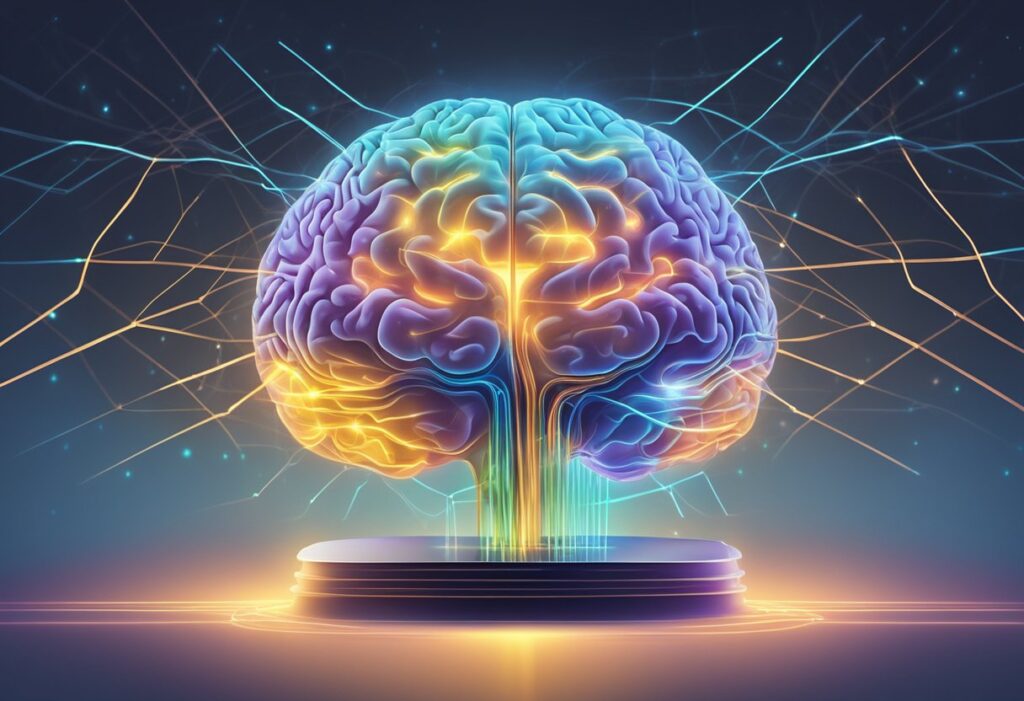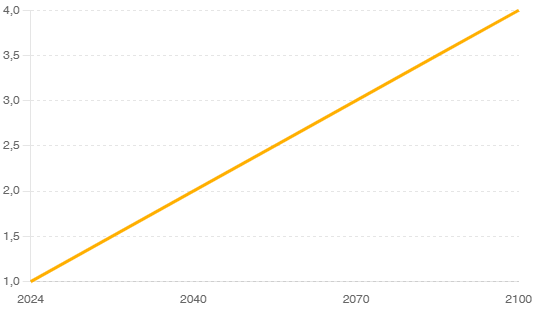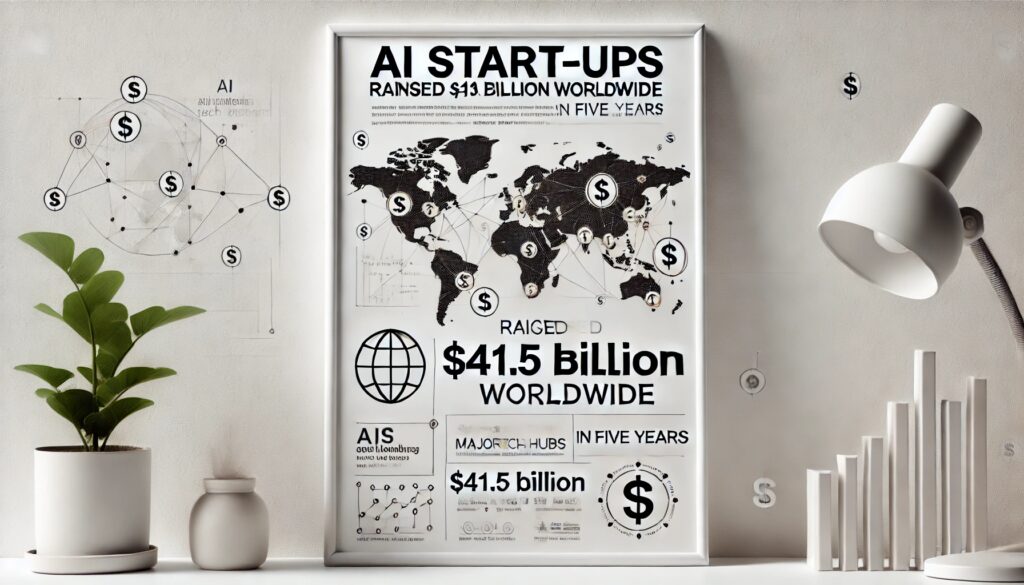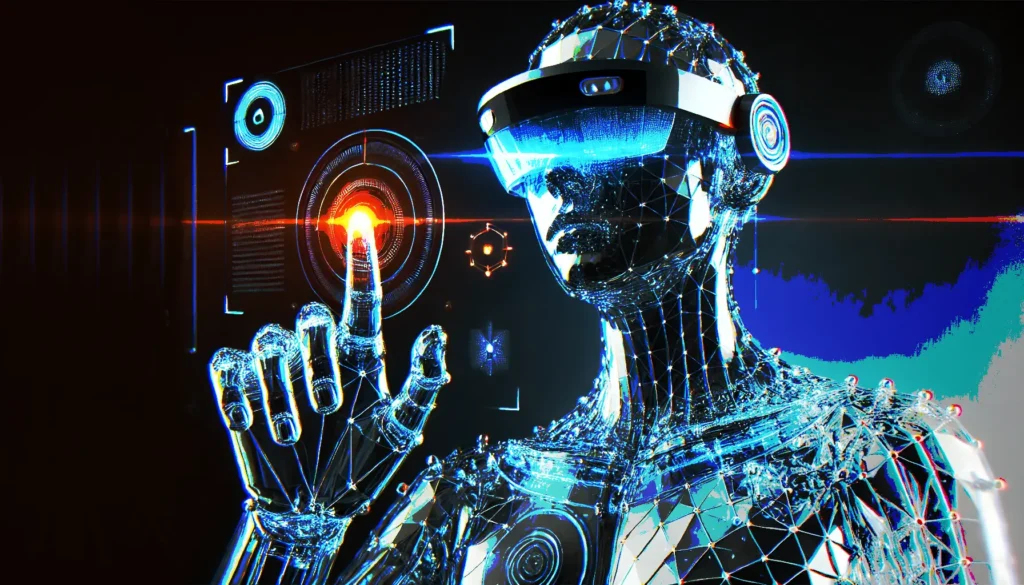
Introduction
The concept of the Singularity is a pivotal topic in discussions about the future of artificial intelligence (AI). It refers to a point in time when technological growth becomes uncontrollable and irreversible, resulting in unforeseeable changes to human civilization. This transformative event is often linked with the advent of superintelligent AI, which could surpass human intelligence and capabilities.
What is the Singularity?
- Definition: The Singularity is a hypothetical future point where technological growth, particularly in AI, accelerates beyond human ability to comprehend or predict.
- Origin: The term was popularized by mathematician and computer scientist Vernor Vinge and futurist Ray Kurzweil.
- Implications: It suggests a future where AI can self-improve without human intervention, potentially leading to rapid advancements in technology.
Key Components of the Singularity
- Superintelligent AI:
- Capabilities: AI surpassing all human intellectual activities.
- Potential: Solving complex problems, creating new technologies, and possibly redefining human existence.
- Exponential Technological Growth:
- Acceleration: Rapid advancements in computing power, biotechnology, nanotechnology, and other fields.
- Impact: Unpredictable changes in society, economy, and global structures.
- Human-AI Integration:
- Augmentation: Enhancements in human cognitive and physical abilities through AI.
- Symbiosis: Potential for humans and AI to work together closely, blurring the lines between biological and artificial intelligence.
Origin and Theorists
Vernor Vinge:
The concept was popularized by the mathematician and computer scientist Vernor Vinge in his 1993 essay "The Coming Technological Singularity," where he argued that the creation of superhuman intelligence would mark the end of the human era.
Ray Kurzweil:
Futurist Ray Kurzweil has extensively written about the Singularity, predicting it will occur by 2045. He suggests that this event will lead to profound changes in human life, merging human biological intelligence with artificial intelligence.
Diagram of the Singularity
Below is a simple diagram illustrating the key components and impacts of the Singularity.
+------------------------+
| The Singularity |
+------------------------+
|
+-----------------------+-----------------------+
| |
+-----------+ +-----------+
| Benefits | | Risks |
+-----------+ +-----------+
| |
V V
+-----------+ +-----------+
| Healthcare| | Control |
+-----------+ +-----------+
| |
V V
+-----------+ +-----------+
| Economic | | Security |
+-----------+ +-----------+
| |
V V
+-----------+ +-----------+
| Global | | Socioecon |
| Challenges| | Disrupt |
+-----------+ +-----------+Here’s a visual illustration of the timeline for key components and impacts leading up to the Singularity. Each milestone represents significant advancements and potential changes at various points in the future.
- 2024: Current advancements in AI, robotics, and biotechnology.
- 2040: Development of advanced AI systems and initial human-computer interfaces.
- 2070: Emergence of Artificial General Intelligence (AGI) and significant economic and societal changes.
- 2100: Potential arrival of the Singularity with uncontrollable technological growth.

This timeline helps visualize the progression towards the Singularity and the transformative impacts expected at each stage.
2024 Components: AI Advancements, Robotics, Biotechnology
Impacts: Job Market Disruption, New Industries
2040 Components: Advanced AI Systems, Human-Computer Interfaces
Impacts: Enhanced Human Cognition, Cybernetic Enhancements
2070 Components: AGI Emergence, Economic and Societal Changes
Impacts: Extended Lifespans, Advanced Healthcare
2100 Components: Singularity, Uncontrollable Tech Growth
Impacts: Ethical Risks, Existential Challenges, Global Power Shifts

This illustration provides a detailed view of the progression towards the Singularity, highlighting the specific technological advancements and their wide-ranging impacts at each stage.
Another timeline diagram illustrating the key components and impacts leading up to the Singularity
Potential Benefits
- Medical Advances:
- Cures and Treatments: AI could find cures for diseases, create personalized medicine, and extend human lifespan.
- Healthcare Efficiency: Improved diagnostics, patient care, and management of health systems.
- Economic Growth:
- Innovation: New industries and job opportunities arising from advanced technologies.
- Productivity: Increased efficiency in manufacturing, logistics, and services.
- Problem Solving:
- Global Challenges: Addressing issues like climate change, poverty, and resource management through advanced AI solutions.
Potential Risks
- Loss of Control:
- Autonomy: AI systems making decisions without human oversight.
- Ethics: Ensuring AI aligns with human values and ethical standards.
- Security Threats:
- Cybersecurity: Advanced AI being used for malicious purposes, such as cyber attacks.
- Autonomous Weapons: Development of AI-powered military technologies.
- Socioeconomic Disruption:
- Job Displacement: Automation leading to unemployment in certain sectors.
- Inequality: Widening gap between those who have access to AI technologies and those who do not.
Preparing for the Singularity
- Ethical AI Development:
- Guidelines: Establishing robust ethical frameworks for AI research and deployment.
- Transparency: Promoting openness in AI development processes and decision-making.
- Education and Adaptation:
- Skill Development: Equipping the workforce with skills needed for the AI-driven future.
- Lifelong Learning: Encouraging continuous education and adaptation to technological changes.
- Global Collaboration:
- Policy Coordination: International cooperation on AI regulation and standards.
- Shared Benefits: Ensuring equitable distribution of AI’s benefits across different regions and communities.
Potential Pathways to the Technology Singularity
Brain-Computer Interfaces (BCIs):
Overview: Brain-Computer Interfaces (BCIs) are systems that establish a direct communication pathway between the brain and external devices. These interfaces can potentially enhance cognitive capabilities, offer new forms of communication, and integrate human intelligence with machine intelligence.
Key Technologies:
- Electroencephalography (EEG): Non-invasive method using electrodes on the scalp to measure electrical activity in the brain.
- Implantable BCIs: Devices surgically implanted into the brain for more precise control and data acquisition. Examples include deep brain stimulation (DBS) and Neuralink’s prototypes.
- Neural Prosthetics: Devices that replace or augment the functions of damaged nervous systems and brain areas, often used to restore lost sensory or motor functions.
Potential Applications:
- Cognitive Enhancement: Improving memory, learning speed, and problem-solving capabilities by interfacing directly with brain functions.
- Communication: Providing alternative communication methods for individuals with disabilities, such as ALS patients, allowing them to interact with computers and other devices using thought alone.
- Integration with AI: Merging human and artificial intelligence to create a symbiotic relationship where humans can leverage AI’s processing power directly through thought.
Challenges:
- Ethical Concerns: Issues related to privacy, consent, and the potential for misuse of BCIs.
- Medical Risks: Risks associated with surgical implantation and long-term health effects of having devices in the brain.
- Technical Limitations: Current limitations in understanding the brain’s complexity and achieving high-resolution, reliable data transfer.
Nanotechnology and Biotechnology:
Overview: Nanotechnology involves manipulating matter on an atomic or molecular scale, typically below 100 nanometers. Biotechnology applies biological systems and organisms to develop or create different technologies and products. Both fields have the potential to bring about significant advances in health, longevity, and human abilities.
Key Technologies:
- Nanomedicine: Using nanoscale materials and devices for diagnosis, treatment, and prevention of diseases. Examples include targeted drug delivery systems, nanoscale imaging techniques, and regenerative medicine.
- Genetic Engineering: Techniques such as CRISPR-Cas9 allow precise editing of DNA, potentially curing genetic disorders, enhancing physical and cognitive traits, and extending lifespan.
- Synthetic Biology: Designing and constructing new biological parts, devices, and systems or re-designing existing biological systems for useful purposes.
Potential Applications:
- Disease Treatment: Targeted therapies that can deliver drugs directly to diseased cells, minimizing side effects and increasing treatment efficacy.
- Longevity: Advances in understanding and manipulating the biological mechanisms of aging could lead to significant extensions of healthy human lifespan.
- Human Enhancement: Developing biological and nano-implants to enhance physical strength, endurance, and cognitive functions.
Challenges:
- Ethical Issues: Debates over genetic modifications, designer babies, and the implications of extending human life.
- Regulatory Hurdles: Ensuring safety and efficacy in new treatments and technologies, and navigating complex regulatory landscapes.
- Technical Barriers: The complexity of biological systems poses significant challenges in developing reliable and effective technologies at the nanoscale.
Integration and Impact:
The convergence of BCIs, nanotechnology, and biotechnology holds the potential to transform human capabilities and societal structures. By enhancing cognitive abilities through BCIs and improving health and longevity with nano- and biotechnologies, we could approach the singularity—where human and machine intelligence blend seamlessly. This integration might lead to a new era of human existence characterized by unprecedented intelligence, health, and abilities.
Ethical and Societal Considerations:
- Equity and Access: Ensuring fair access to these advanced technologies to prevent societal divisions.
- Regulation and Oversight: Developing frameworks to govern the use and development of these technologies responsibly.
- Philosophical Questions: Addressing questions about what it means to be human, the nature of consciousness, and the implications of vastly extended lifespans.
The journey towards the technology singularity through these pathways is fraught with challenges but offers immense potential for advancing human civilization.

2045: The Dawn of the Technological Singularity – Are We Ready for Superintelligent AI?
The technological singularity is a hypothetical future point at which technological growth becomes uncontrollable and irreversible, resulting in unforeseeable changes to human civilization. The concept is often associated with the idea that artificial intelligence (AI) will surpass human intelligence, leading to exponential advances in technology.
The year 2045 is frequently mentioned in discussions about the technological singularity, largely due to predictions made by futurist Ray Kurzweil. Here are some key points regarding the technological singularity and its predicted occurrence around 2045:
Key Concepts of the Technological Singularity
- Exponential Growth of Technology: The idea that technological progress is accelerating exponentially, especially in fields like AI, nanotechnology, and biotechnology.
- Artificial Superintelligence: The development of AI systems that surpass human cognitive abilities. Such superintelligent AI could potentially self-improve, leading to rapid advancements beyond human control or understanding.
- Unpredictability: The singularity represents a point beyond which the future becomes difficult, if not impossible, to predict due to the transformative impact of superintelligent AI and other advanced technologies.
- Transhumanism: The belief that humans can and should use technology to enhance physical and cognitive abilities, potentially achieving radical life extension and other enhancements.
Predictions and Timelines
- Ray Kurzweil’s Prediction: Ray Kurzweil, a prominent futurist and director of engineering at Google, predicts that the singularity will occur around 2045. He bases this prediction on his analysis of historical trends in technology and the exponential growth of computing power (often referred to as Moore’s Law).
- Kurzweil’s Law of Accelerating Returns: Kurzweil argues that technological progress follows a pattern of accelerating returns, meaning that the rate of progress increases exponentially. This principle underlies his prediction of the singularity.
Potential Impacts and Considerations
- Economic and Social Disruption: The emergence of superintelligent AI could lead to significant disruptions in the economy, labor market, and social structures, as machines could perform tasks currently done by humans more efficiently.
- Ethical and Philosophical Questions: The singularity raises numerous ethical questions about the role of humans in a world dominated by superintelligent machines, the potential loss of human autonomy, and the moral status of AI entities.
- Existential Risks: There are concerns that superintelligent AI could pose existential risks to humanity if its goals are not aligned with human values or if it becomes uncontrollable.
- Technological Optimism vs. Caution: Proponents of the singularity, like Kurzweil, are often optimistic about the potential for AI to solve major global challenges and improve human well-being. Critics, however, emphasize the need for caution and rigorous safety measures to mitigate potential risks.
Current Developments
- AI Research: Advances in machine learning, neural networks, and related fields are bringing us closer to the development of more sophisticated AI systems.
- Brain-Computer Interfaces: Innovations in brain-computer interface technology, such as those being developed by companies like Neuralink, are seen as steps toward enhancing human cognitive capabilities and integrating humans with AI.
- Ethics and Regulation: There is growing interest in developing ethical guidelines and regulatory frameworks to ensure the safe and beneficial development of AI technologies.
While 2045 is a speculative date, the idea of the technological singularity continues to drive both excitement and concern within the scientific and technological communities. The path to such a future, if it occurs, will likely involve profound changes and challenges that require careful consideration and preparation.
Conclusion
The Singularity represents both an exciting and daunting prospect for the future of AI and humanity. While it promises unprecedented advancements and solutions to complex problems, it also poses significant risks that must be carefully managed. Preparing for the Singularity requires a balanced approach, emphasizing ethical considerations, global cooperation, and proactive adaptation to the rapid changes that advanced AI technologies will bring.
FAQ: Potential Pathways to the Technology Singularity
Brain-Computer Interfaces (BCIs)
Q: What are Brain-Computer Interfaces (BCIs)? A: BCIs are systems that create a direct communication pathway between the brain and external devices, enhancing cognitive functions and integrating human intelligence with AI.
Q: How do BCIs work? A: BCIs work by detecting brain signals (usually through electrodes) and translating them into commands for external devices, such as computers or prosthetics.
Q: What are the potential benefits of BCIs? A: Benefits include improved memory, learning speed, communication for individuals with disabilities, and the potential for cognitive enhancement by integrating with AI.
Q: What are the risks associated with BCIs? A: Risks include medical complications from implantation, ethical concerns about privacy and consent, and technical challenges in achieving reliable and precise data transfer.
Q: Are BCIs currently available? A: While BCIs are in use for specific medical applications, such as controlling prosthetic limbs or assisting individuals with severe disabilities, widespread consumer use is still in development.
Nanotechnology and Biotechnology
Q: What is nanotechnology? A: Nanotechnology involves manipulating matter at the atomic or molecular scale, typically below 100 nanometers, to create new materials and devices with unique properties.
Q: How can nanotechnology improve healthcare? A: Nanotechnology can improve healthcare through targeted drug delivery, advanced imaging techniques, regenerative medicine, and nanoscale medical devices.
Q: What is biotechnology? A: Biotechnology applies biological systems and organisms to develop technologies and products that improve human life, including genetic engineering and synthetic biology.
Q: How does genetic engineering work? A: Genetic engineering involves altering the DNA of an organism to achieve desired traits, such as disease resistance, enhanced physical abilities, or extended lifespan.
Q: What are the ethical concerns of biotechnology? A: Ethical concerns include the potential for genetic discrimination, the creation of designer babies, and the long-term impacts on biodiversity and natural ecosystems.
Integration and Impact
Q: How will BCIs and nanotechnology impact society? A: These technologies could drastically improve health, cognitive abilities, and longevity, leading to significant changes in how we live, work, and interact with each other.
Q: What is the technology singularity? A: The technology singularity is a theoretical point where technological growth becomes uncontrollable and irreversible, resulting in unforeseen changes to human civilization.
Q: How might BCIs contribute to the singularity? A: By enabling direct integration between human brains and AI, BCIs could accelerate cognitive enhancements and intelligence amplification, pushing us closer to the singularity.
Q: How might nanotechnology and biotechnology contribute to the singularity? A: These technologies could extend human lifespan, enhance physical and cognitive abilities, and create new forms of human-machine hybrids, significantly advancing technological progress.
Q: What are the potential risks of the technology singularity? A: Risks include the possibility of superintelligent AI acting against human interests, ethical dilemmas about human identity and rights, and societal divides due to unequal access to advanced technologies.
Resources
- Ray Kurzweil’s Predictions
- Vernor Vinge’s Paper on the Singularity
- OpenAI
- Future of Life Institute
- AI Alignment
- The Singularity is Near






